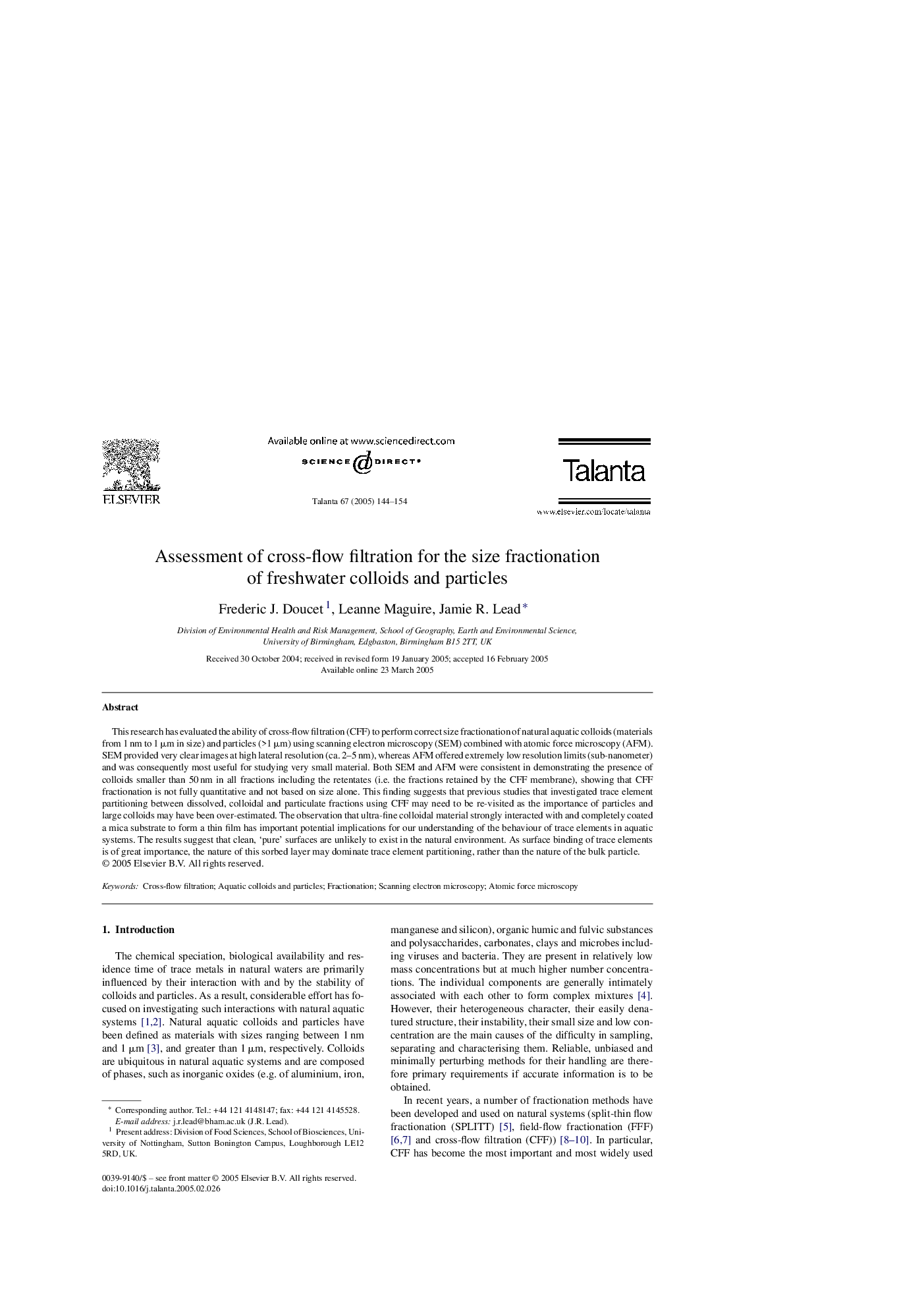| Article ID | Journal | Published Year | Pages | File Type |
|---|---|---|---|---|
| 10560826 | Talanta | 2005 | 11 Pages |
Abstract
This research has evaluated the ability of cross-flow filtration (CFF) to perform correct size fractionation of natural aquatic colloids (materials from 1 nm to 1 μm in size) and particles (>1 μm) using scanning electron microscopy (SEM) combined with atomic force microscopy (AFM). SEM provided very clear images at high lateral resolution (ca. 2-5 nm), whereas AFM offered extremely low resolution limits (sub-nanometer) and was consequently most useful for studying very small material. Both SEM and AFM were consistent in demonstrating the presence of colloids smaller than 50 nm in all fractions including the retentates (i.e. the fractions retained by the CFF membrane), showing that CFF fractionation is not fully quantitative and not based on size alone. This finding suggests that previous studies that investigated trace element partitioning between dissolved, colloidal and particulate fractions using CFF may need to be re-visited as the importance of particles and large colloids may have been over-estimated. The observation that ultra-fine colloidal material strongly interacted with and completely coated a mica substrate to form a thin film has important potential implications for our understanding of the behaviour of trace elements in aquatic systems. The results suggest that clean, 'pure' surfaces are unlikely to exist in the natural environment. As surface binding of trace elements is of great importance, the nature of this sorbed layer may dominate trace element partitioning, rather than the nature of the bulk particle.
Related Topics
Physical Sciences and Engineering
Chemistry
Analytical Chemistry
Authors
Frederic J. Doucet, Leanne Maguire, Jamie R. Lead,
